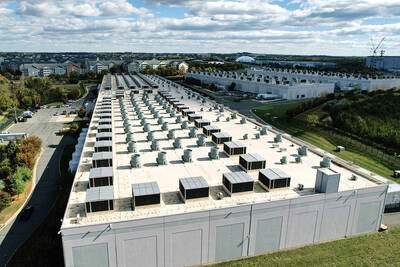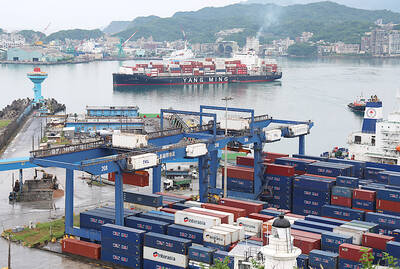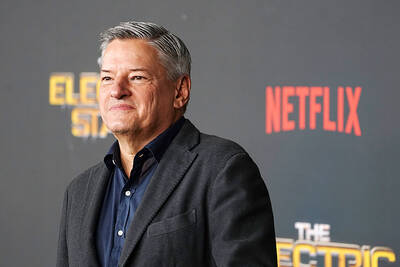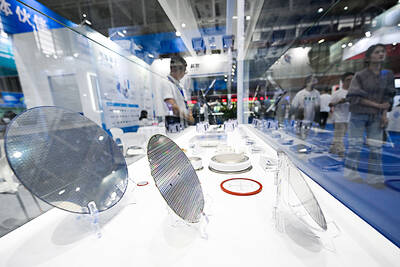Jim Rogers, cofounder with George Soros of the Quantum Hedge Fund, is investing in Taiwan on expectations that this week's presidential election will install a government that will improve ties with China.
Rogers, 65, said he recently bought exchange-traded funds tied to Taiwan, predicting the two economies would "merge" and that the NT dollar would be boosted by appreciation in the yuan.
Chinese Nationalist Party (KMT) presidential candidate Ma Ying-jeou (
"Both of them are going to bring peace," Rogers, chairman of Rogers Holdings, said in an interview with Bloomberg Television on Wednesday in Singapore.
"It's ultimately going to be a merger of Taiwan and China. The currencies are going to merge. The economies are going to merge," he said.
The NT dollar has risen 5.5 percent this year, while the benchmark TAIEX index gained 5.6 percent in the past month as Ma and Hsieh promised to expand travel and investment ties should they win the March 22 vote.
The TAIEX advanced 1.9 percent to 8,337.62 by the 1:30pm close in Taipei. The NT dollar gained 0.1 percent to NT$30.692. Taiwan's local currency bonds have returned 1.6 percent this year, HSBC Holdings Plc index said.
Taiwan's currency has been the worst performer in Asia outside of Japan in the past three years as economic growth slowed to an average 4.09 percent annually since 2000 from 6.48 percent over the previous eight years.
"As soon as the market opens, I will be buying some more Taiwan," Rogers said in the interview late on Wednesday.
"We'll see if it's an overlooked trade or not. I haven't heard many people talking about Taiwan in 15 to 18 years," he said.

The demise of the coal industry left the US’ Appalachian region in tatters, with lost jobs, spoiled water and countless kilometers of abandoned underground mines. Now entrepreneurs are eyeing the rural region with ambitious visions to rebuild its economy by converting old mines into solar power systems and data centers that could help fuel the increasing power demands of the artificial intelligence (AI) boom. One such project is underway by a non-profit team calling itself Energy DELTA (Discovery, Education, Learning and Technology Accelerator) Lab, which is looking to develop energy sources on about 26,305 hectares of old coal land in

Taiwan’s exports soared 56 percent year-on-year to an all-time high of US$64.05 billion last month, propelled by surging global demand for artificial intelligence (AI), high-performance computing and cloud service infrastructure, the Ministry of Finance said yesterday. Department of Statistics Director-General Beatrice Tsai (蔡美娜) called the figure an unexpected upside surprise, citing a wave of technology orders from overseas customers alongside the usual year-end shopping season for technology products. Growth is likely to remain strong this month, she said, projecting a 40 percent to 45 percent expansion on an annual basis. The outperformance could prompt the Directorate-General of Budget, Accounting and

Netflix on Friday faced fierce criticism over its blockbuster deal to acquire Warner Bros Discovery. The streaming giant is already viewed as a pariah in some Hollywood circles, largely due to its reluctance to release content in theaters and its disruption of traditional industry practices. As Netflix emerged as the likely winning bidder for Warner Bros — the studio behind Casablanca, the Harry Potter movies and Friends — Hollywood’s elite launched an aggressive campaign against the acquisition. Titanic director James Cameron called the buyout a “disaster,” while a group of prominent producers are lobbying US Congress to oppose the deal,

Two Chinese chipmakers are attracting strong retail investor demand, buoyed by industry peer Moore Threads Technology Co’s (摩爾線程) stellar debut. The retail portion of MetaX Integrated Circuits (Shanghai) Co’s (上海沐曦) upcoming initial public offering (IPO) was 2,986 times oversubscribed on Friday, according to a filing. Meanwhile, Beijing Onmicro Electronics Co (北京昂瑞微), which makes radio frequency chips, was 2,899 times oversubscribed on Friday, its filing showed. The bids coincided with Moore Threads’ trading debut, which surged 425 percent on Friday after raising 8 billion yuan (US$1.13 billion) on bets that the company could emerge as a viable local competitor to Nvidia